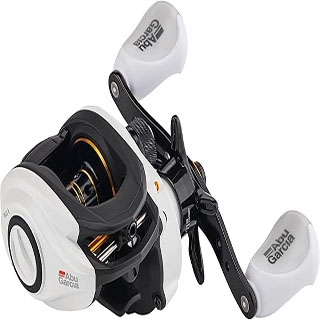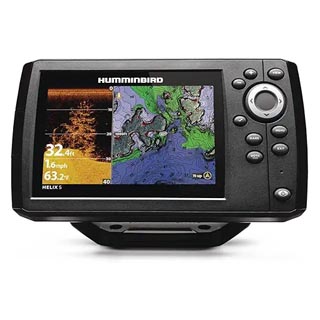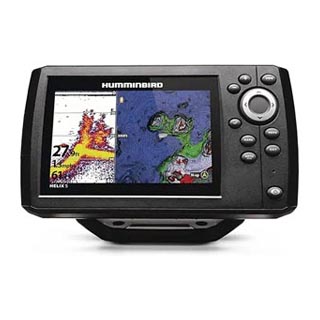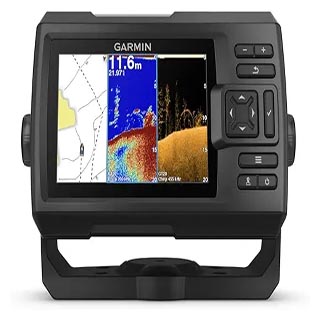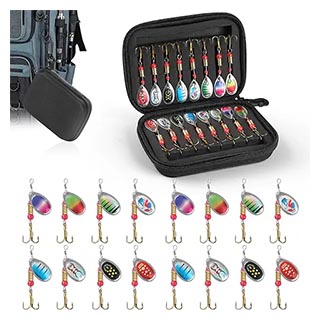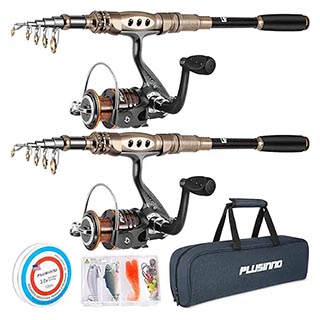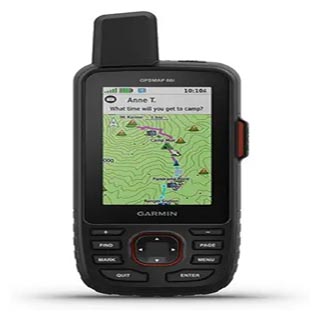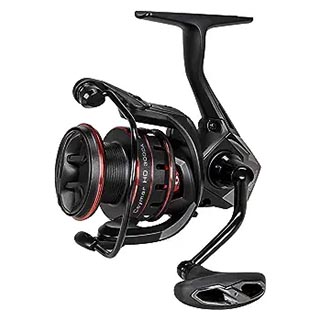Not Just Fishing
Fishing Articles and Information

Question: Dual VS Single Frequency Sonar
I'm looking at an upgrade from my 240Blue Garmin. It is dual frequency (50khz & 200khz) and am wondering if I really need
"dual frequency" if I upgrade? Or would a single frequency give me better resolution? I fish in 50' or less fast current
water and slow troll (need a paddle wheel for accurate speed). Do I get better "coverage" with a dual?
Lon
Answer:
After reading your email, I think you may be a little confused, so hopefully this will help,
If your only fishing up to 50', than you will not need the 50 khz transducer. The single frequency transducer if it is 200 khz will
give you the resolution required. I think what your looking for is the cone angle. 20 degrees on a 200 khz transducer.
You can get a 35 degree cone on a 50 khz transducer, which will give a wider and deeper area of coverage but at a loss of resolution.
Now, if you want to get the coverage, depth in the 100's of foot range and the resolution, you are going to have to factor in Power.
The power you require for what your doing is about 100 Watts RMS, not peak to peak but I would suggest you look in the
200 Watts RMS (300 would be better if you have the budget).Now the other thing you might want to consider is, Side Sonar.
The benefits are listed below.
I have looked at your 240 Blue Garmin,
"The Fishfinder 240 Blue offers offshore
anglers 4,000 watts of power peak to peak (500 watts RMS) and dual frequency (50/200 kHz) for shallow or deep-water performance.
The Fishfinder 240 Blue boasts a high-resolution, 240x240-pixel count on a four-level grayscale display. And, like all Garmin
fishfinders, it utilizes our patented See-Thru® technology to detect weak and strong signals that allow the angler to see fish in
structure and thermoclines. The unit's graphic whiteline provides a clear picture of the bottom hardness and contour."
and all I can say is, " if it ain't broken, don't try to fix it"
This is a nice unit and if it is working properly,
why spend the money on a new one? This one will do everything you want it to. The only drawback I see is that it is not in color.
It is hard to go back once you've tried it. I get the distinct impression and correct me if I'm wrong, but it seems like your saying,
you know there are fish here but your not seeing them. If this is the case you might be looking at using a Flasher unit which
gives you readings in real time, not like a scrolling graph.
Please read this email a couple of times, there are a lot of points to digest and you may want to do some more reading before you put
out the big bucks.
Lowrance
Frequency
Most of the sonar units that we sell accessories for operate
at 200 kHz (kilohertz). Some are dual-frequency capable, meaning they can use both 50 and 200 kHz transducers. And a few new models
are dual-search capable, allowing for both 83 and 200 kHz operation.
Typically, high frequency (200 or 192 kHz) sonar
units provide the best resolution and definition of structure and targets. They excel at showing minute details of the underwater
world. 50 and 83 kHz frequencies have much greater depth penetration capability, but show less definition.
You must match the transducer's frequency to the sonar unit. For example, a 200 kHz sonar unit requires a 200 kHz transducer.
Cone Angle
A transducer's cone angle determines its coverage area of the underwater world. The wider the cone
angle, the greater the area that's covered. We offer a variety of 200 kHz transducers with either a wide (20°) or narrow (12°)
cone angle. We also offer a variety of 192 kHz transducers with either a wide (20°) or narrow (8°) cone angle. The 50 kHz
transducers come with a 35° cone angle.
The dual-frequency transducers come with both a narrow (12°) 200 kHz and a
wide (35°) 50 kHz cone angles. And the dual-search transducers come with both a narrow (12°) 200 kHz and a wide (35°) 83 kHz cone angles.
Generally, use a wide cone angle (20° vs. 12°) for fishing shallow to medium depths.
The narrow cone (12°)
penetrates to deeper depths, but shows less fish and structure due to its narrow beam. This only applies when comparing transducers
of the same frequency. For example, although a 50 kHz transducer has a broader cone angle than the 200 kHz transducers, the 50 kHz
transducer will travel much deeper due to its lower frequency transmission.
The depth capability of your sonar units depends on its transmitter power, receiver, sensitivity, frequency, transducer
and transducer installation. Other things that effect depth capability are: water conditions and type (all sonars will show deeper
depth readings in fresh water than salt) and bottom conditions.
Humminbird
Wide Side technology
combines left and right sidefinding beams that scan for fish and structure to the sides of the boat. This configuration is popular
with anglers fishing shallows, along the banks, under docks and around pilings.
With Wide Side, you'll get:
Ability to view structure and fish near to the water surface, but out to the sides.
Ability to look left, right or both directions simultaneously (always with digital depth on-screen).
A single down-looking
beam to track depth and show bottom contour.
Choices of transom and trolling motor mount transducer options.
Fishing Applications
Save time when fishing around docks by using Wide Side to look underneath the dock to see if there's fish before you start
casting. If you don't see the fish, move on and concentrate your fishing elsewhere.
When trolling along banks, scan to side to look for fish and structure and cast to the bank when you see a good spot.
All in all I hope this helps and if you have any other questions don't hesitate to ask.
Comments:
Wow...what a complete and detailed answer. More than
I expected - and definitely much to digest.
As a matter of fact...you may even have saved me quite a few $$.
I love your
comment ... If it ain't broke - don't fix it. Wisdom!
I'm most appreciative for your answer...and much much thanks.
Lon
